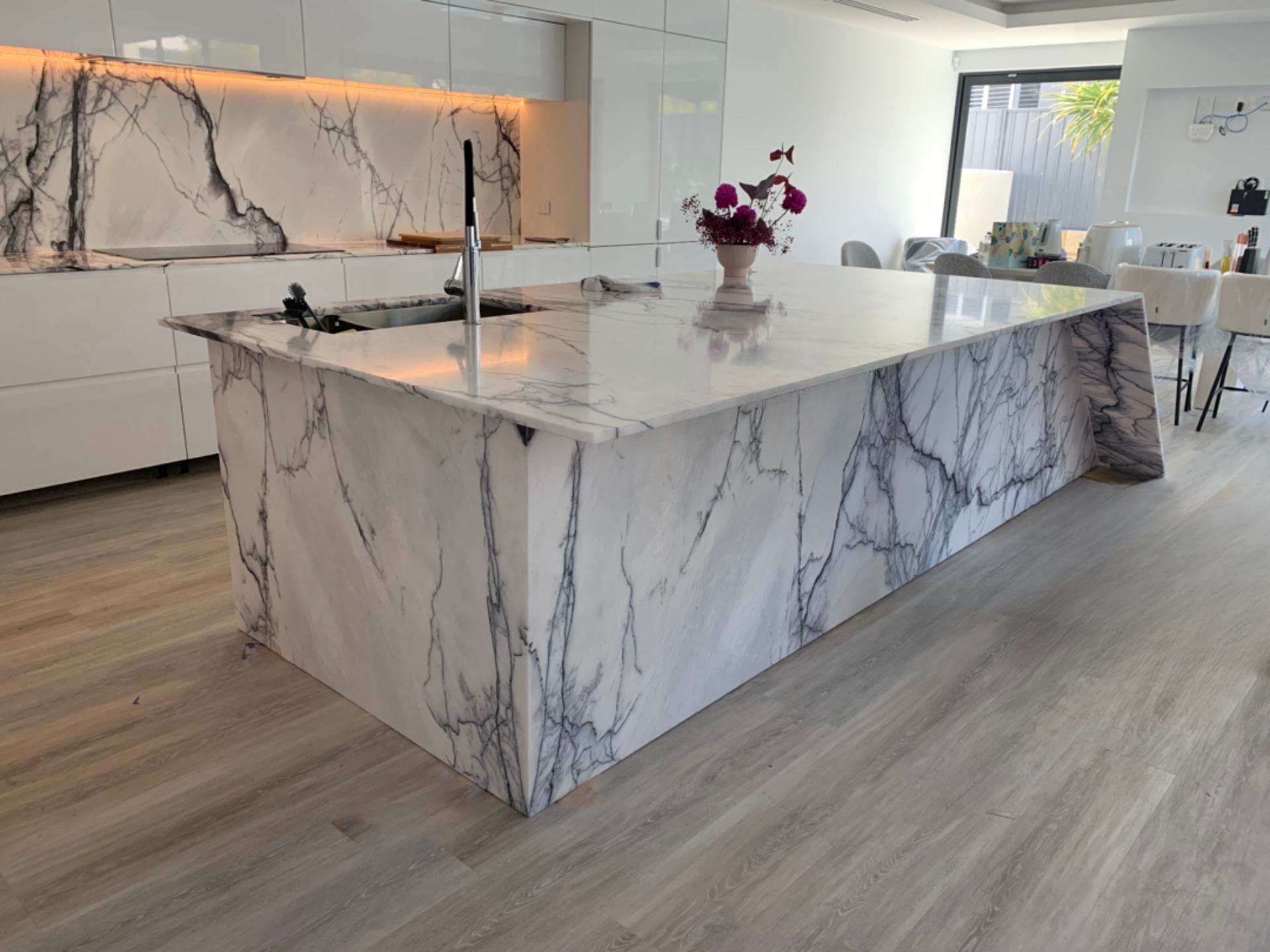
11 May Understanding the Cost of Benchtops: Factors That Influence Pricing
Stone benchtops can elevate the look and feel of any kitchen or bathroom, adding a touch of luxury and durability to your space. However, understanding the costs involved in selecting and installing a benchtop can be overwhelming. In this blog post, we’ll discuss the factors that influence the pricing and provide tips for finding the perfect option that fits your budget.
-
Material Type
The type of stone you choose will significantly impact the cost of your benchtop. Natural stones, such as granite and marble, tend to be more expensive due to their limited availability and the complexity of quarrying and processing them. Engineered stones, such as quartz, can be more affordable as they are manufactured and often readily available. However, prices for both natural and engineered stones can vary widely depending on factors such as quality, rarity, and colour.
-
Stone Thickness
The thickness of your stone benchtop will also affect its cost. Thicker slabs require more material, which can increase the overall price. Common thicknesses for stone benchtops include 20mm and 30mm, with the latter typically being more expensive. Some modern materials such as porcelain can be as thin as 12mm but contact us to discuss all the options available to you.
-
Edge Profile
The edge profile you choose for your stone benchtop can impact the cost as well. Simple edge profiles, such as eased or beveled edges, typically cost less than more intricate designs like ogee or waterfall edges. The complexity of the edge profile will determine the amount of labor and time required for fabrication, which in turn affects the price.
-
Fabrication and Installation
The process of cutting, shaping, and installing your stone benchtop involves skilled labor, which contributes to the overall cost. Factors that can influence fabrication and installation costs include the size and layout of your benchtop, the number of cutouts required for sinks or cooktops, and any additional customization, such as integrated drainboards or unique edge profiles.
-
Transportation
The cost of transporting your stone from the manufacturer to your home can add to the overall price. Factors that influence transportation costs include the distance between your home and the supplier, the weight and size of the benchtop, and any special handling requirements. For example, do you need a crane to lift it into a second storey?
Final tips
- Compare different stone materials: Research the various stone options available, considering both natural and engineered stones, and compare their prices. This will help you find a material that fits your budget without compromising on quality or aesthetics.
- Opt for a simpler edge profile: Choosing a more basic edge profile can help reduce the cost of your stone benchtop. Eased or beveled edges, for example, require less labor and are typically more affordable than intricate designs.
- Consider offcuts: Sometimes we have leftover pieces of stone from previous projects, known as offcuts. If available, these may be purchased at a better price but may only be suitable for very small projects or bathroom vanities.

No Comments